BSLIC: SLIC Superpixels Based on Boundary Term
Abstract
:1. Introduction
2. Overview of BSIC
3. Algorithm of BSLIC
3.1. Distribution of Cluster Centers
3.2. Initialization of Edge Centers
- If there exist image edges in the searching region of plane center (like ), choose a median edge pixel as the edge center (like );
- If there is no image edge within the region (like ), no edge center is generated;
- To avoid any noisy pixel being chosen as cluster center, modify the edge center to the lowest gradient position in the corresponding local neighborhood;
- Edge center is introduced to reduce the negativity of edge-across superpixels. It is necessary to keep it near to the image edges. During the 10 iterations, edge centers remain unalterable, and only plane centers are updated to the mean value.
3.3. Distance Measurement
4. Experimental Results
4.1. BSLIC Superpixels
4.2. Qualitative Comparisons
4.3. Quantitative Comparisons
5. Conclusions
Acknowledgments
Author Contributions
Conflicts of Interest
References
- Ren, X.; Malik, J. Learning a classification model for segmentation. In Proceedings of the IEEE International Conference on Computer Vision (ICCV), Nice, France, 13–16 October 2003.
- Veksler, O.; Boykov, Y.; Mehrani, P. Superpixels and Supervoxels in an Energy Optimization Framework. In Proceedings of the European Conference on Computer Vision-Part V (ECCV Part V), Crete, Greece, 5–11 September 2010.
- Achanta, R.; Shaji, A.; Smith, K.; Lucchi, A.; Fua, P.; Susstrunk, S. SLIC Superpixels Compared to State-of-the-Art Superpixel Methods. IEEE Trans. Pattern Anal. 2012, 34, 2274–2282. [Google Scholar] [CrossRef] [PubMed]
- Li, Z.; Wu, X.M.; Chang, S.F. Segmentation using superpixels: A bipartite graph partitioning approach. In Proceedings of the IEEE International Conference on Computer Vision and Pattern Recognition (CVPR), Providence, RI, USA, 16–21 June 2012.
- Gonzalo-Martín, C.; Lillo-Saavedra, M.; Menasalvas, E.; Fonseca-Luengo, D.; García-Pedrero, A.; Costumero, R. Local optimal scale in a hierarchical segmentation method for satellite images. J. Intell. Inf. Syst. 2016, 46, 517–529. [Google Scholar] [CrossRef]
- Schick, A.; Bauml, M.; Stiefelhagen, R. Improving foreground segmentations with probabilistic superpixel Markov random Fields. In Proceedings of the IEEE International Conference on Computer Vision and Pattern Recognition Workshop (CVPR Workshop), Providence, RI, USA, 16–21 June 2012.
- O, N.K.; Kim, C. Unsupervised Texture Segmentation of Natural Scene Images Using Region-based Markov Random Field. J. Signal Process. Syst. 2016, 83, 423–436. [Google Scholar] [CrossRef]
- Ayvaci, A.; Soatto, S. Motion segmentation with occlusions on the superpixel graph. In Proceedings of the IEEE International Conference on Computer Vision Workshop (ICCV Workshop), Kyoto, Japan, 27 September–4 October 2009.
- Lee, T.; Fidler, S.; Levinshtein, A.; Sminchisescu, C.; Dickinson, S. A Framework for Symmetric Part Detection in Cluttered Scenes. Symmetry 2015, 7, 1333–1351. [Google Scholar] [CrossRef]
- Fu, K.; Gong, C.; Yang, J.; Zhou, Y.; Gu, I.Y.H. Superpixel based color contrast and color distribution driven salient object detection. Signal Process.-Image 2013, 28, 1448–1463. [Google Scholar] [CrossRef]
- Xie, Y.; Lu, H.; Yang, M.H. Bayesian Saliency via Low and Mid-Level Cues. IEEE Trans. Image Process. 2013, 22, 1689–1698. [Google Scholar] [PubMed]
- Peng, H.; Bing, L.; Ling, H.; Hu, W.; Xiong, W.; Maybank, S.J. Salient object detection via structured matrix decomposition. IEEE Trans. Pattern Anal. 2016, 99, 796–802. [Google Scholar] [CrossRef] [PubMed]
- Feng, J.; Cao, Z.; Pi, Y. Polarimetric Contextual Classification of PolSAR Images Using Sparse Representation and Superpixels. Remote Sens. 2014, 6, 7158–7181. [Google Scholar] [CrossRef]
- Garcia-Pedrero, A.; Rodríguez-Esparragón, D.; Gonzalo-Martín, C.; Ibarrola, E.; Lillo-Saavedra, M.; Marcello, J. Automatic identification of shrub vegetation of the Teide National Park. In Proceedings of the International Work Conference on Bio-Inspired Intelligence (IWOBI), San Sebastian, Spain, 10–12 June 2015.
- Bergh, M.V.D.; Boix, X.; Roig, G.; Capitani, B.; Gool, L.V. Seeds: Superpixels extracted via energy-driven sampling. Int. J. Comput. Vis. 2015, 111, 1–17. [Google Scholar]
- Shi, J.; Malik, J. Normalized Cuts and Image Segmentation. IEEE Trans. Pattern Anal. 2000, 22, 888–905. [Google Scholar]
- Pedro, F.; Felzenszwalb, P.F.; Daniel, P.H. Efficient Graph-Based Image Segmentation. Int. J. Comput. Vis. 2004, 59, 167–181. [Google Scholar]
- Thomas, H.C.; Charles, E.L.; Ronald, L.R.; Clifford, S. Introduction to Algorithms, 3rd ed.; The MIT Press: Cambridge, MA, USA, 2009; pp. 43–45. [Google Scholar]
- Comaniciu, D.; Meer, P. Mean Shift: A robust approach toward feature space analysis. IEEE Trans. Pattern Anal. 2002, 24, 603–619. [Google Scholar] [CrossRef]
- Vedaldi, A.; Soatto, S. Quick Shift and Kernel Methods for Mode Seeking. In Proceedings of the European Conference on Computer Vision-Part IV (ECCV Part IV), Marseille, France, 12–18 October 2008.
- Levinshtein, A.; Stere, A.; Kutulakos, K.N.; Fleet, D.J.; Dickinson, S.J.; Siddiqi, K. TurboPixels: Fast Superpixels Using Geometric Flows. IEEE Trans. Pattern Anal. 2009, 31, 2290–2297. [Google Scholar] [CrossRef] [PubMed]
- Zhang, Y.; Hartley, R.; Mashford, J.; Burn, S. Superpixels via Pseudo-Boolean Optimization. In Proceedings of the International Conference on Computer Vision (ICCV), Barcelona, Spain, 6–13 November 2011.
- Liu, Y.J.; Yu, C.C.; Yu, M.J.; He, Y. Manifold SLIC: A Fast Method to Compute Content-Sensitive Superpixels. In Proceedings of the IEEE International Conference on Computer Vision and Pattern Recognition (CVPR), Seattle, WA, USA, 27–30 June 2016.
- Fowlkes, C.; Martin, D.; Malik, J. Learning affinity functions for image segmentation: Combining patch-based and gradient-based approaches. In Proceedings of the IEEE International Conference on Computer Vision and Pattern Recognition (CVPR), Madison, WI, USA, 16–22 June 2003.
- Garcia-Pedrero, A.; Gonzalo-Martin, C.; Fonseca-Luengo, D.; Lillo-Saavedra, M. A GEOBIA methodology for fragmented agricultural landscapes. Remote Sens. 2015, 7, 767–787. [Google Scholar] [CrossRef]
- The Berkeley Segmentation Dataset and Benchmark. Available online: https://www2.eecs.berkeley.edu/Research/Projects/CS/vision/bsds/ (accessed on 24 November 2016).
- Luxburg, U. A tutorial on spectral clustering. Stat. Comput. 2007, 17, 395–416. [Google Scholar] [CrossRef]
- Peng, X.; Tang, H.; Zhang, L.; Zhang, Y.; Xiao, S. A Unified Framework for Representation-Based Subspace Clustering of Out-of-Sample and Large-Scale Data. IEEE Trans. Neural Netw. 2016, 27, 2499–2512. [Google Scholar] [CrossRef] [PubMed]
- Liu, M.Y.; Tuzel, O.; Ramalingam, S.; Chellappa, R. Entropy rate superpixel segmentation. In Proceedings of the IEEE International Conference on Computer Vision and Pattern Recognition (CVPR), Colorado Springs, CO, USA, 20–25 June 2011.


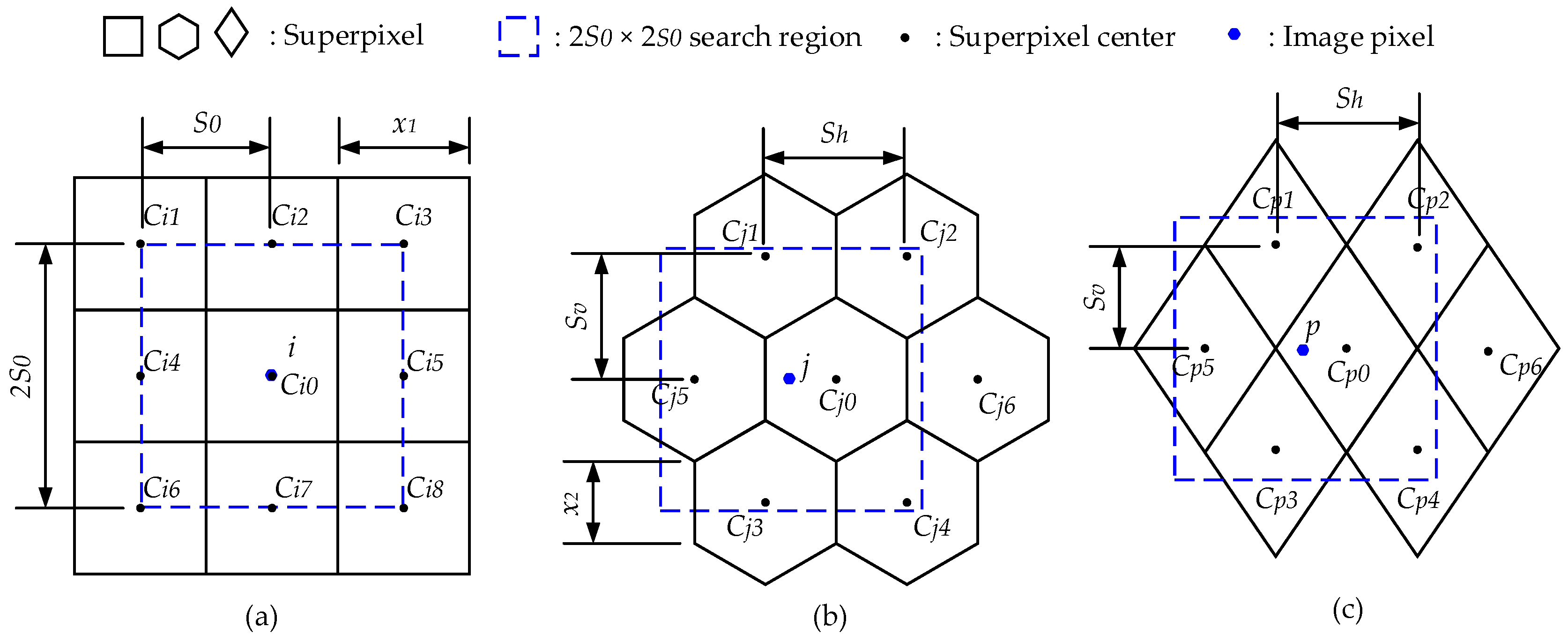


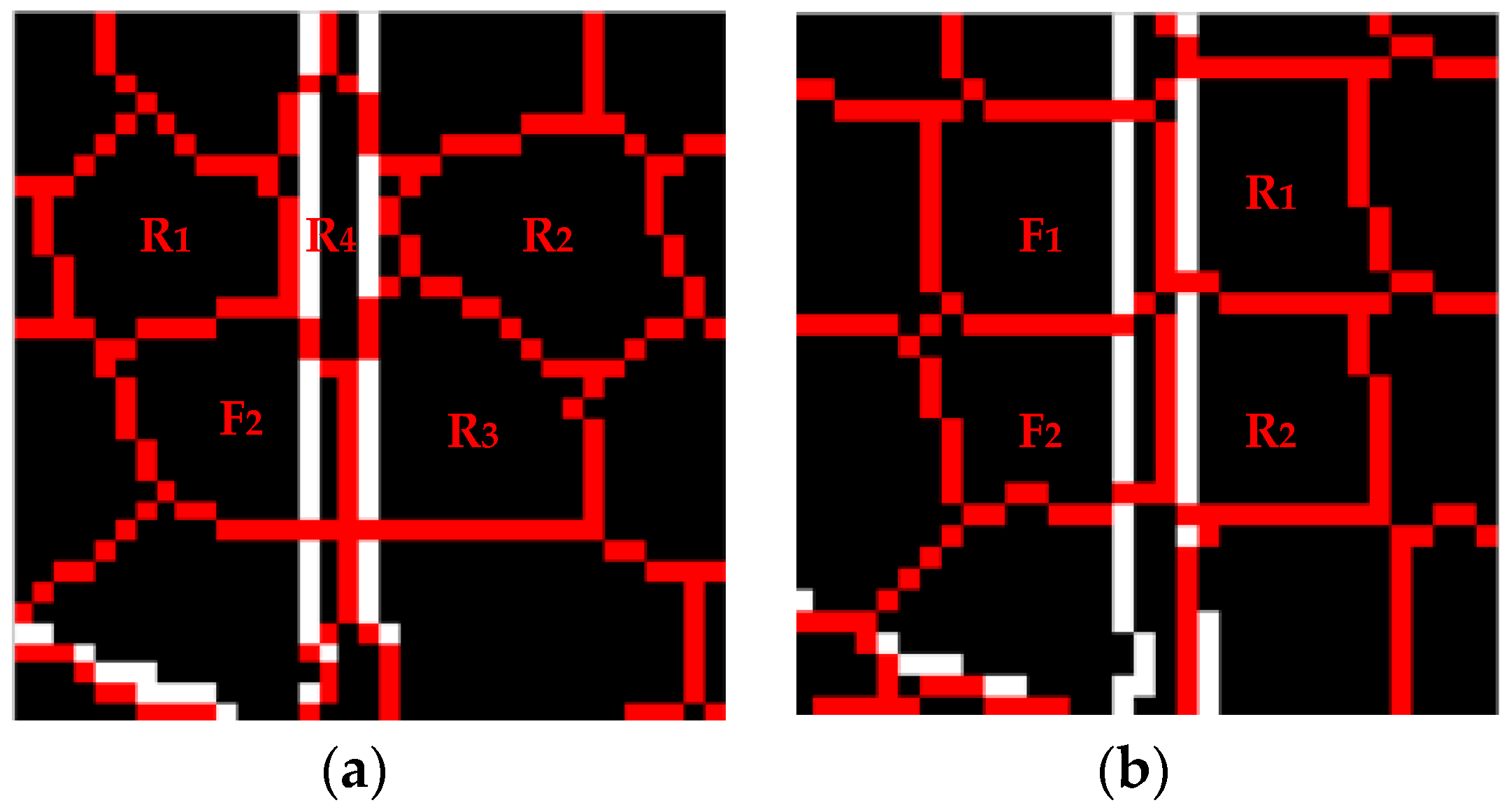

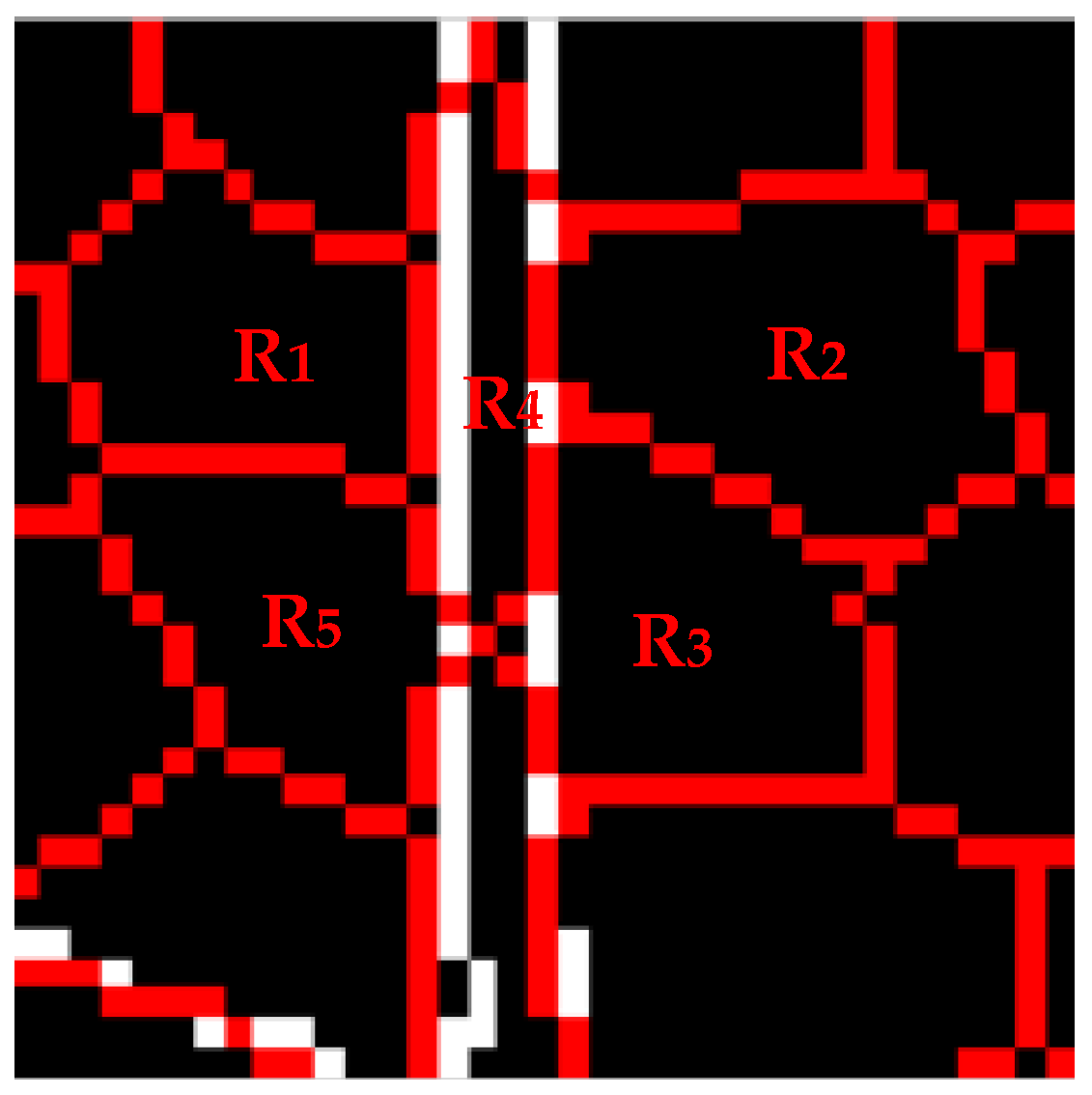

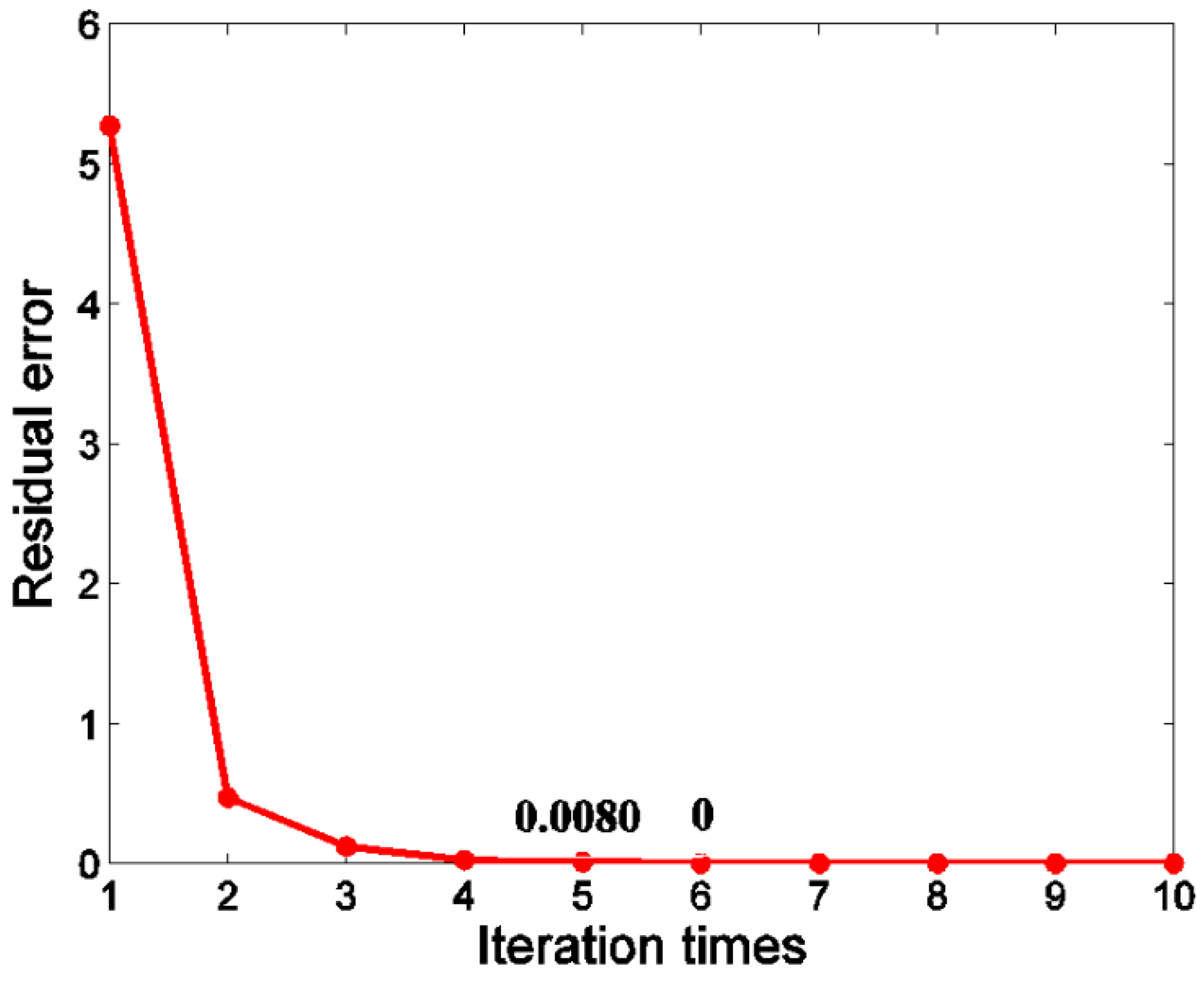
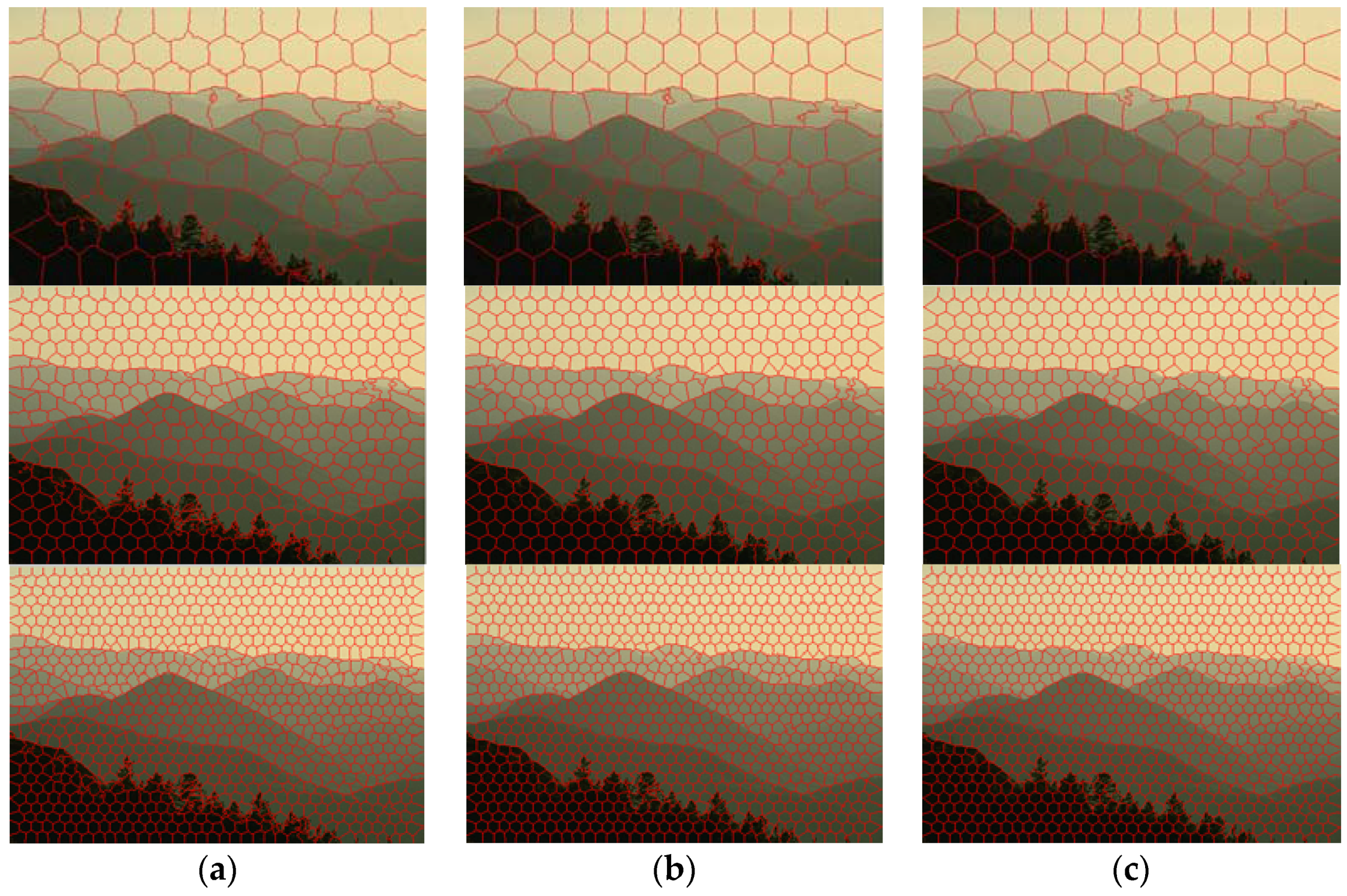
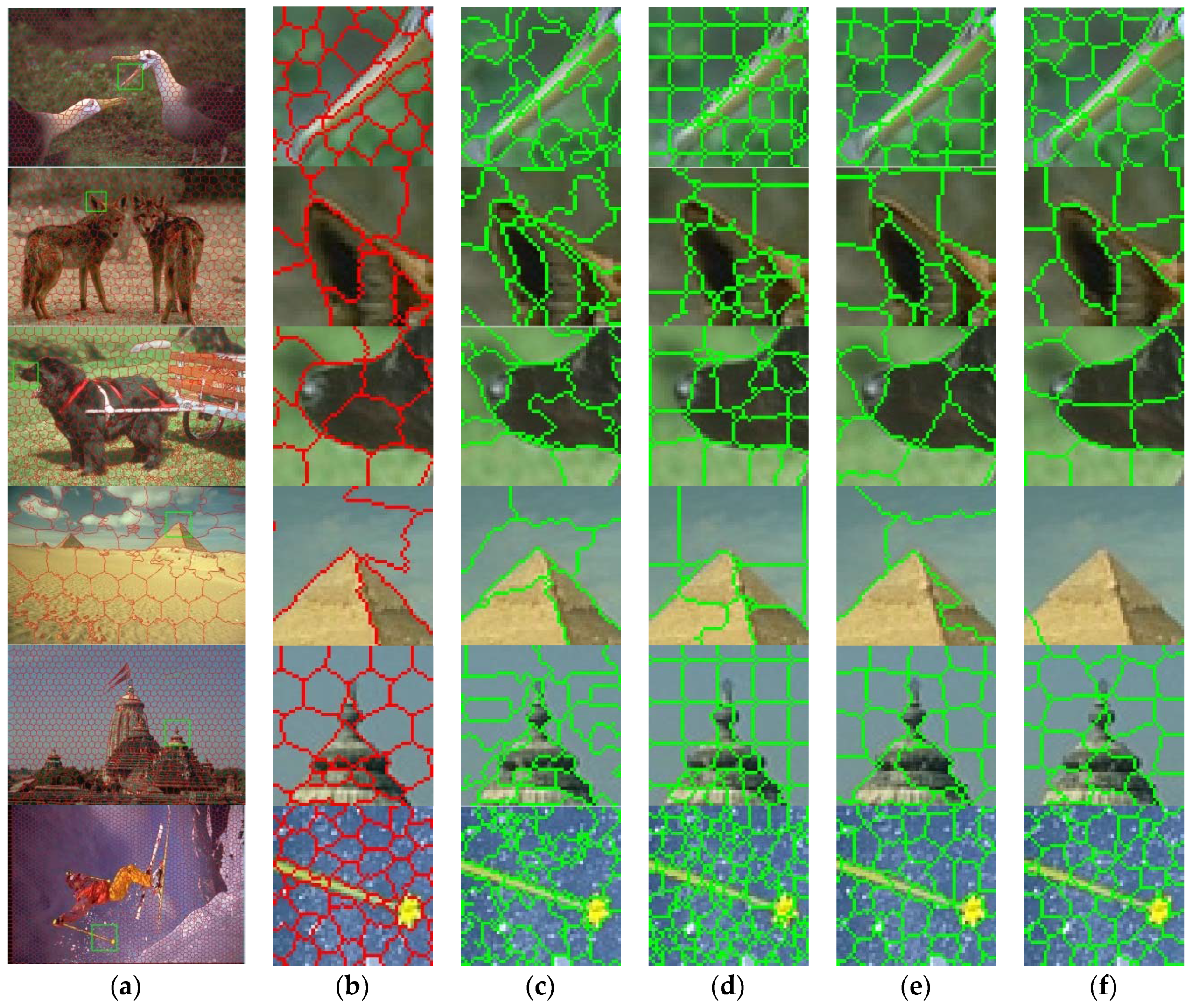
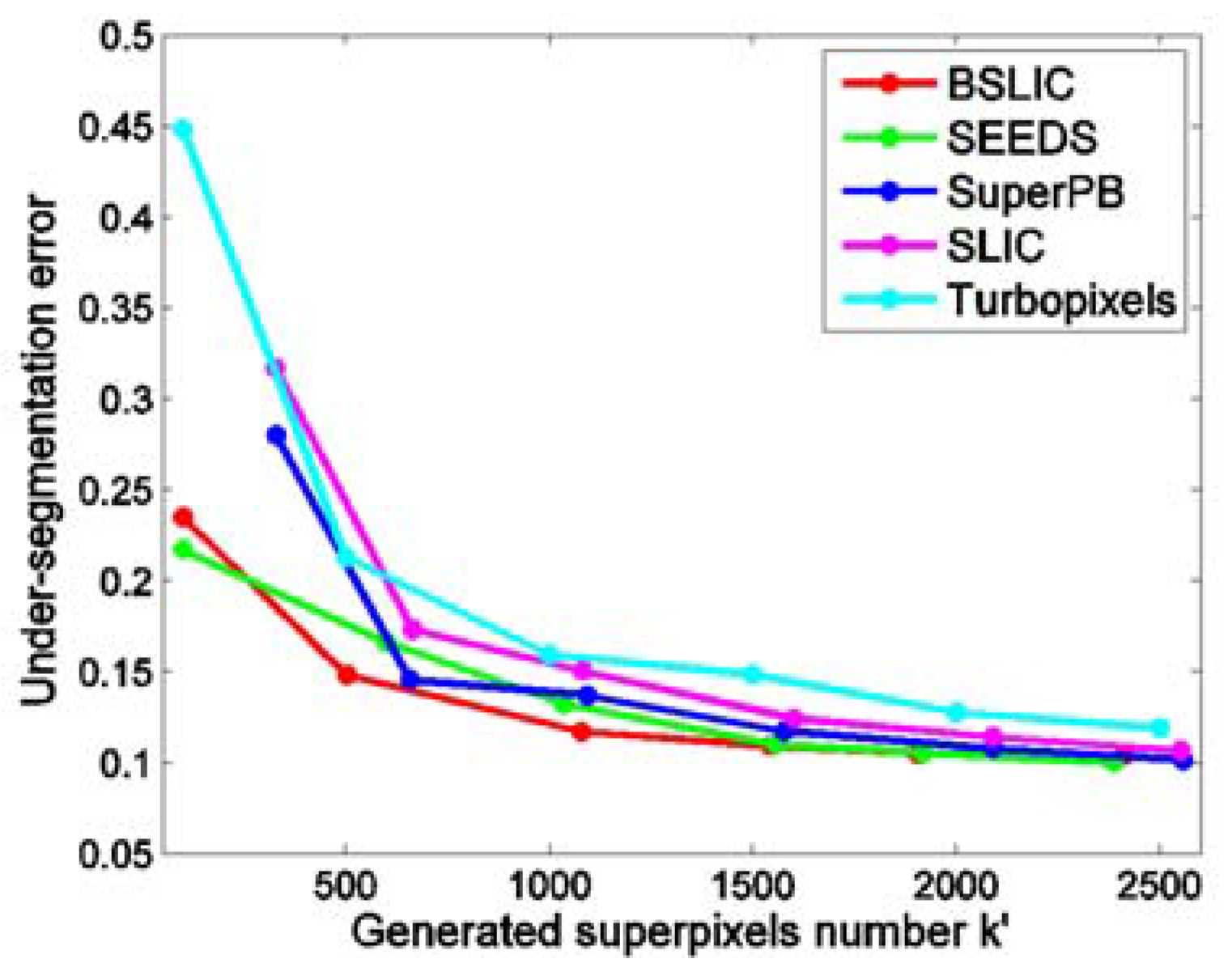
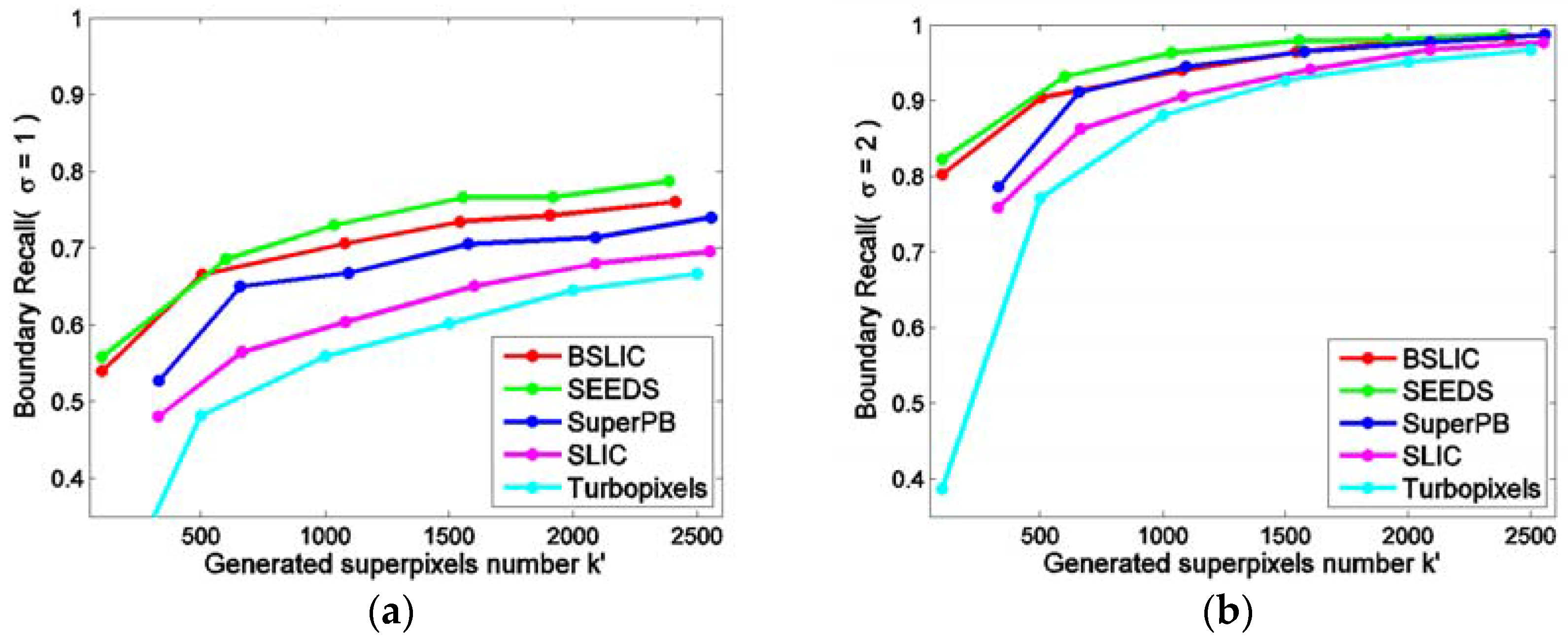
| 500 | 1000 | 1500 | 2000 | 2500 | ||
|---|---|---|---|---|---|---|
| SLIC | 0.5932 | 0.6346 | 0.6245 | 0.6791 | 0.6782 | |
| BSLIC | 0.5849 | 0.6858 | 0.6888 | 0.6981 | 0.7193 | |
| Improving Rate | −0.0083 | 0.0512 | 0.0623 | 0.0190 | 0.0411 | |
| SLIC | 0.5646 | 0.6035 | 0.6504 | 0.6798 | 0.6957 | |
| BSLIC | 0.6501 | 0.6672 | 0.7055 | 0.7139 | 0.7397 | |
| Improving Rate | 0.0856 | 0.0638 | 0.0552 | 0.0340 | 0.0440 | |
| SLIC | 0.5014 | 0.5500 | 0.6046 | 0.6470 | 0.6793 | |
| BSLIC | 0.6257 | 0.6613 | 0.6786 | 0.7042 | 0.7222 | |
| Improving Rate | 0.1243 | 0.1113 | 0.0740 | 0.0572 | 0.0430 | |
| 500 | 1000 | 1500 | 2000 | 2500 | ||
|---|---|---|---|---|---|---|
| SLIC | 0.2146 | 0.1540 | 0.1455 | 0.1247 | 0.1170 | |
| BSLIC | 0.2348 | 0.1395 | 0.1334 | 0.1204 | 0.1113 | |
| Improving Rate | −0.0202 | 0.0146 | 0.0121 | 0.0043 | 0.0057 | |
| SLIC | 0.1731 | 0.1505 | 0.1242 | 0.1140 | 0.1064 | |
| BSLIC | 0.1415 | 0.1369 | 0.1172 | 0.1078 | 0.1012 | |
| Improving Rate | 0.0277 | 0.0136 | 0.0071 | 0.0062 | 0.0051 | |
| SLIC | 0.1936 | 0.1572 | 0.1307 | 0.1193 | 0.1090 | |
| BSLIC | 0.1585 | 0.1346 | 0.1176 | 0.1067 | 0.1036 | |
| Improving Rate | 0.0351 | 0.0227 | 0.0130 | 0.0126 | 0.0053 | |
© 2017 by the authors. Licensee MDPI, Basel, Switzerland. This article is an open access article distributed under the terms and conditions of the Creative Commons Attribution (CC BY) license ( http://creativecommons.org/licenses/by/4.0/).
Share and Cite
Wang, H.; Peng, X.; Xiao, X.; Liu, Y. BSLIC: SLIC Superpixels Based on Boundary Term. Symmetry 2017, 9, 31. https://doi.org/10.3390/sym9030031
Wang H, Peng X, Xiao X, Liu Y. BSLIC: SLIC Superpixels Based on Boundary Term. Symmetry. 2017; 9(3):31. https://doi.org/10.3390/sym9030031
Chicago/Turabian StyleWang, Hai, Xiongyou Peng, Xue Xiao, and Yan Liu. 2017. "BSLIC: SLIC Superpixels Based on Boundary Term" Symmetry 9, no. 3: 31. https://doi.org/10.3390/sym9030031






